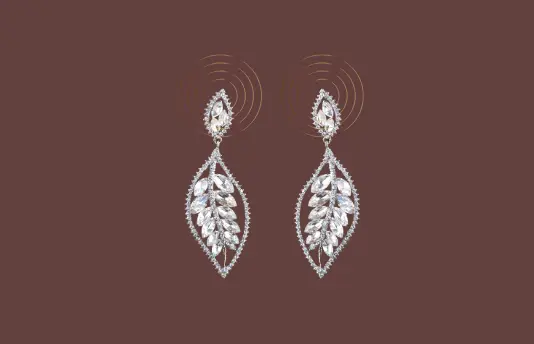Diamond
4 Cs
Diamonds are the classic choice for an engagement ring. Understanding the 4 C’s of cut, color, clarity, and carat weight can help you best identify the diamond that works for your budget, ring, and preferences. We recommend selecting a diamond shape and then finding a balance between size and quality. Sometimes choosing a smaller diamond can get you a higher quality stone, while opting for an option with some color or a lower clarity grade can allow you to get a larger carat weight within your budget.
Cut
By understanding the way that light moves through diamond crystals, modern diamond cutters have established a set of proportions and angles that are known to harness the diamond’s internal brilliance. Cut refers to the facets, symmetry, and reflective qualities of a diamond. The cut of a diamond is directly related to its overall sparkle and beauty and can be one of the most important factors to consider when optimizing for the overall look of your diamond.
Color
Diamond color refers to the natural color or lack of color visible within a diamond, and is caused by natural trace elements, such as nitrogen, that were present when the diamond formed under the Earth’s crust. The color grade assigned is based on the GIA grading scale which determines the amount of yellow or grey hues visible within a diamond. Jweyo carries only diamonds within the “colorless” and “near-colorless” range (from D color to J color). The closer a diamond is to “colorless,” the rarer it is, and the more valuable.
Clarity
Clarity is determined by the visibility of natural microscopic inclusions and imperfections within a diamond. Diamonds with little to no inclusions are considered particularly rare and highly valued.
Carat
Carat measures the overall weight of the diamond, which impacts the visual size of your diamond. Different diamond shapes will hold their carat weight differently, so some elongated fancy shapes such as oval, pear, or marquise diamonds can appear to be larger than round diamonds of comparable carat weight because they have longer dimensions.
Lab vs. Natural
Lab diamonds have the same chemical, optical, and physical properties as natural diamonds, but are created by scientists above ground in a controlled environment. These diamonds are considered more budget-friendly and eco-friendly as they require no mining.


 Canada (CAD)
Canada (CAD)
 United Kingdom (GBP)
United Kingdom (GBP)
 Australia (AUD)
Australia (AUD)














